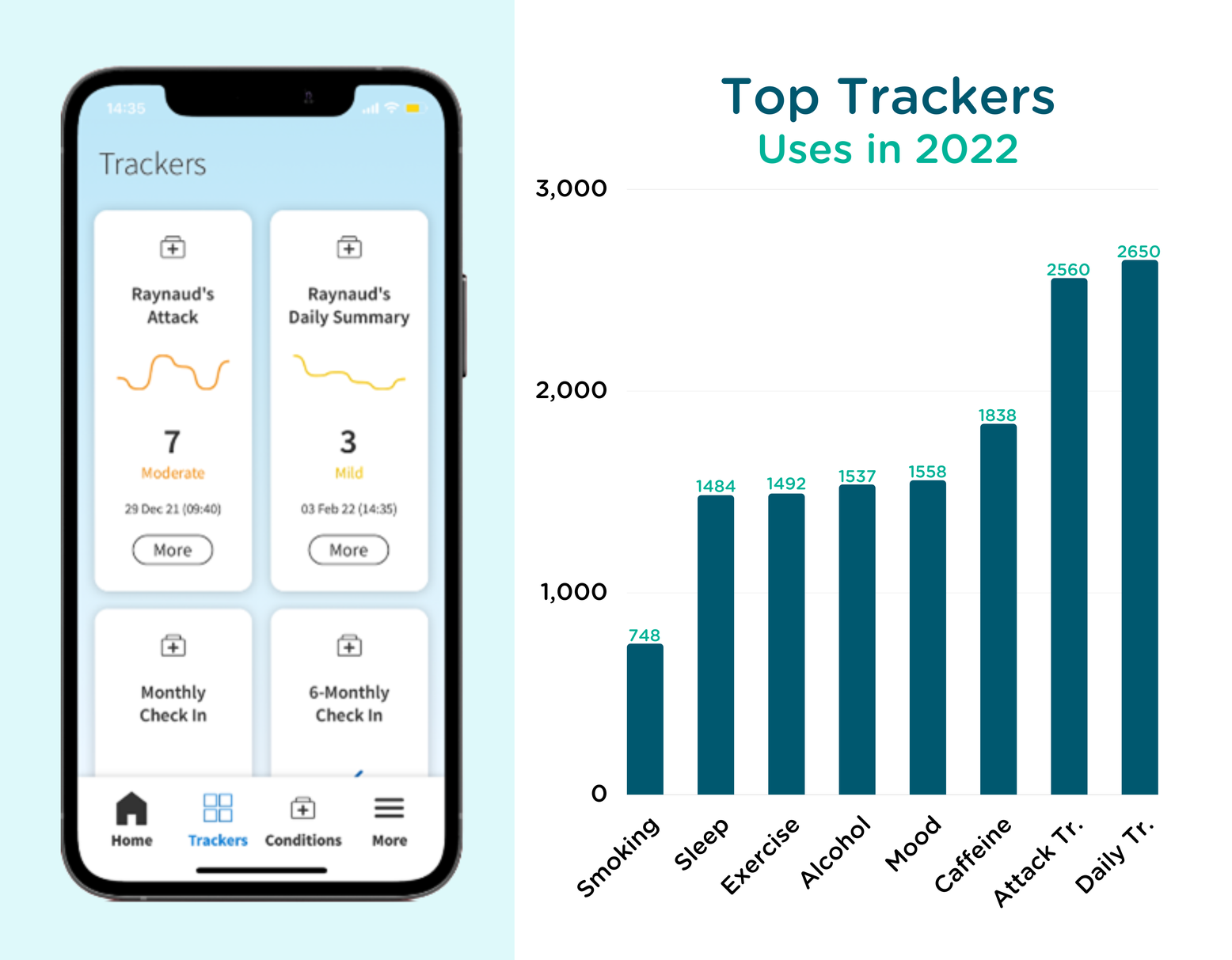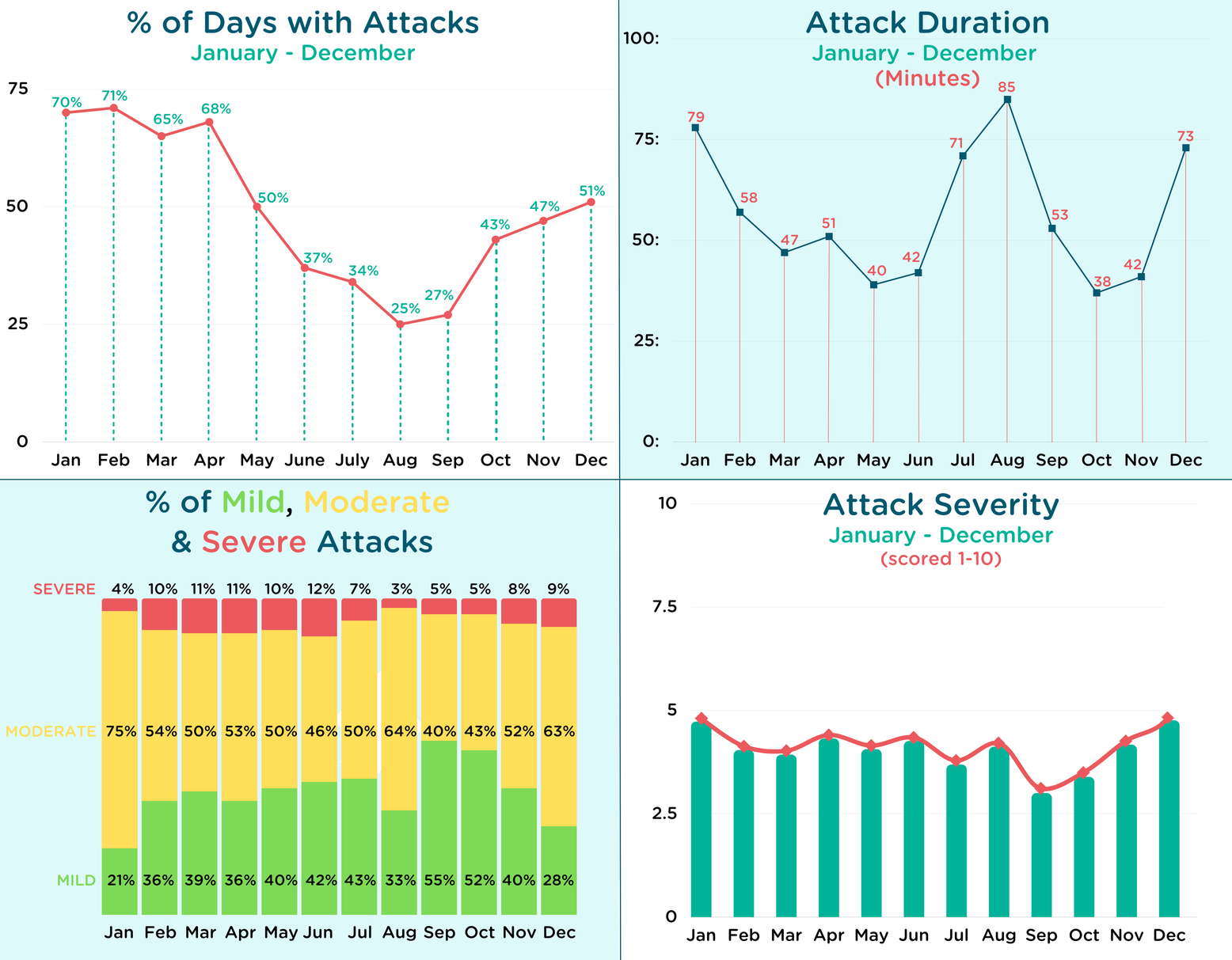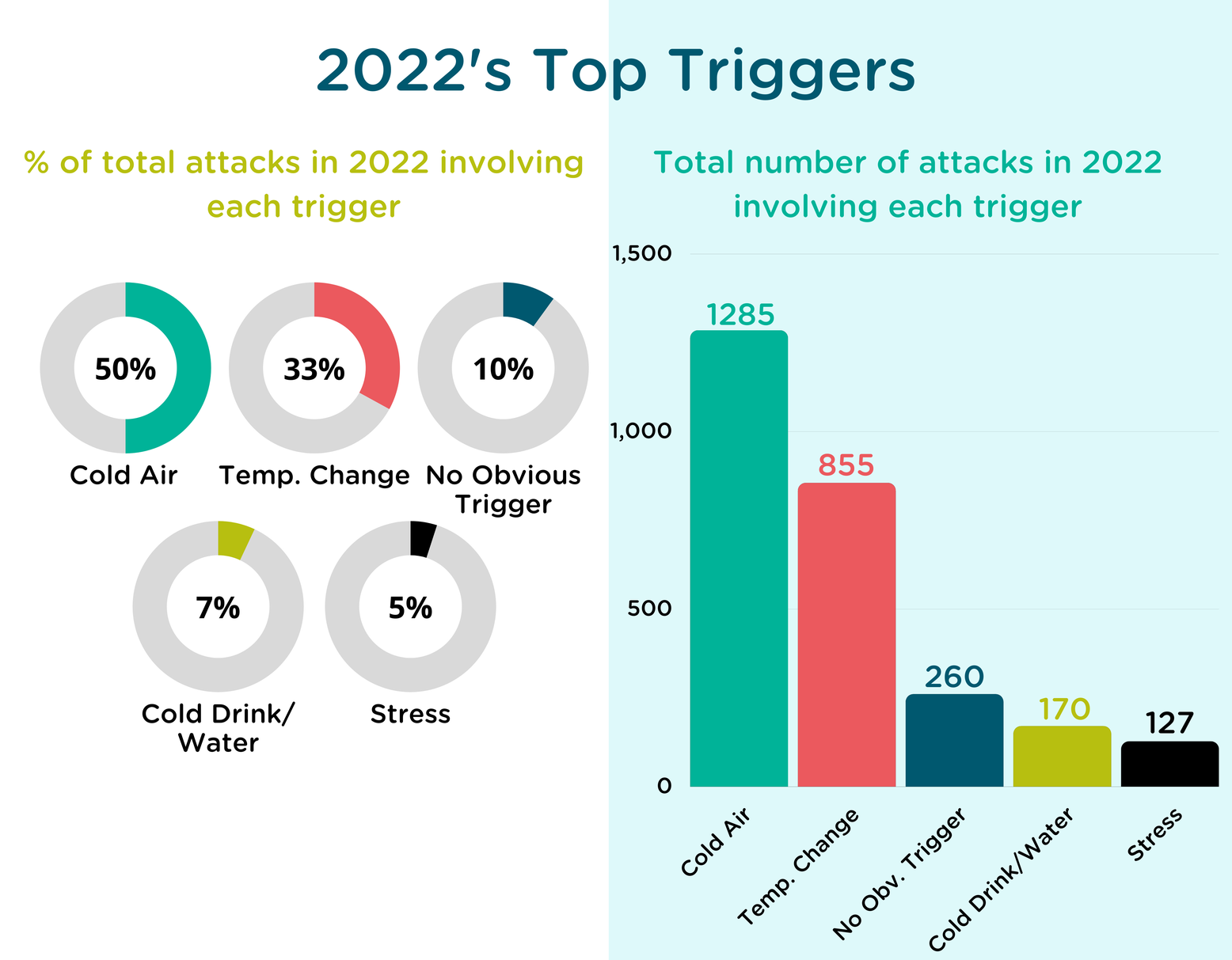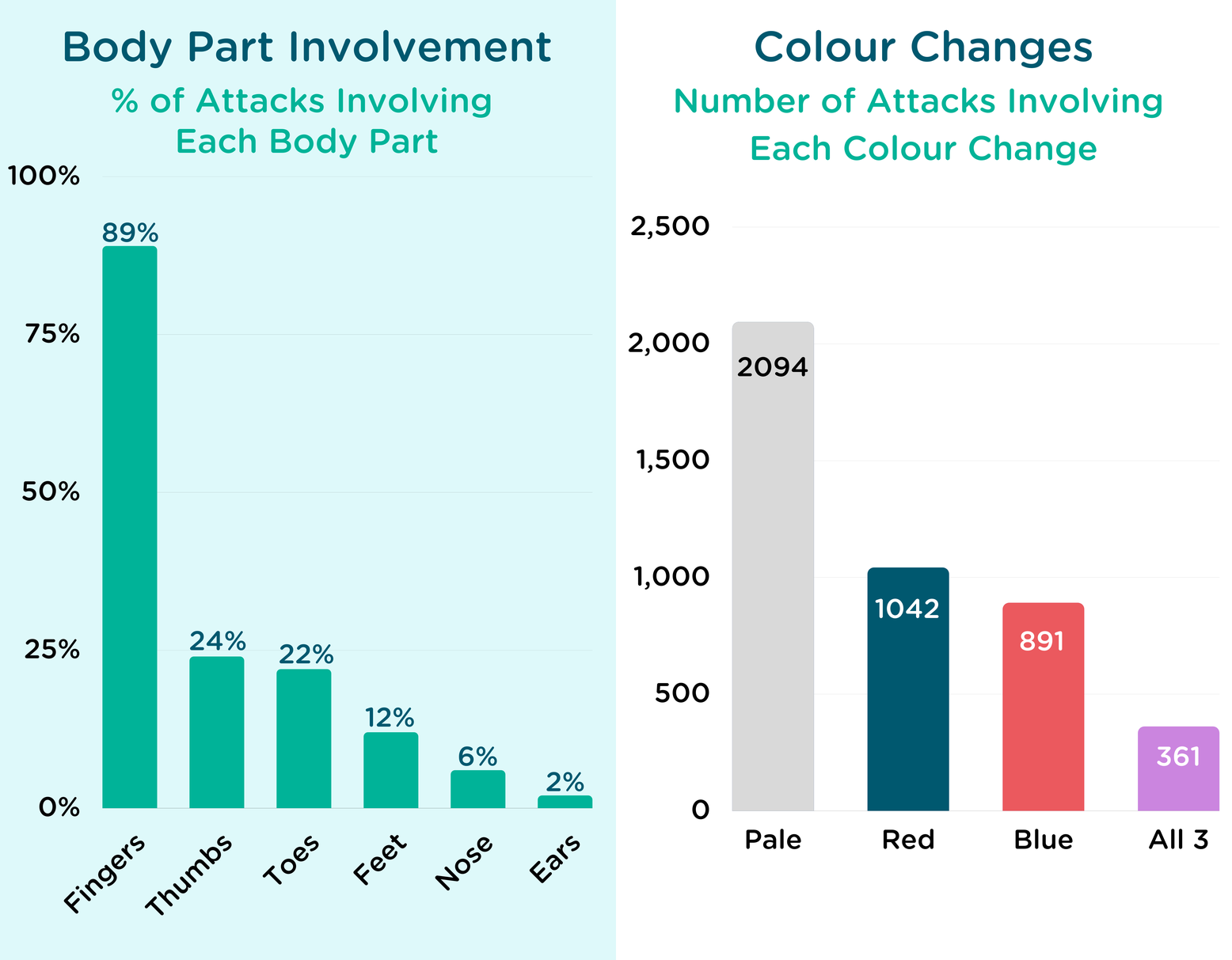STAR turns 1! Here’s what we learned from the Symptom Tracking App for Raynaud’s in 2022
January 2023 marked the 1st Anniversary of the SRUK STAR App. The data contained within the app helps facilitate research into Raynaud’s, allowing us to learn more about the condition and how it affects our community. Read on to find out more about the STAR App and what your data has shown us so far!
January 2023 marked the 1st Anniversary of the SRUK STAR (Symptom Tracking App for Raynaud’s) App. STAR aspires to empower users to increase their awareness of their Raynaud’s symptoms, attack frequency, and possible triggers. The data contained within the app helps facilitate research into Raynaud’s, allowing us to learn more about the condition and how it affects our community. Read on to find out more about the relaunched STAR App and what your data has shown us so far.
STAR is an updated version of SRUK’s Raynaud’s Research App. The original Raynaud’s Research App contained six trackers that focused on the severity and duration of a person’s Raynaud’s attacks. The App was originally used in Professor Francesco Del Galdo’s Strike study, a five-year study which monitors patients with scleroderma for their risk of progression to severe disease.
In February 2021, SRUK offered the Raynaud’s Community the opportunity to use the original Raynaud’s App, with around 130 people taking up our offer to use the app for one month to track their symptoms. Based on the positive feedback from this group, SRUK decided to continue with this project and work with App users and rheumatologists to expand the functionality of the App and the data it collects. We hoped that this would allow us to develop a deeper understanding of Raynaud’s on the individual and population level.
How has the app changed?
Based on feedback from users of the original app, SRUK worked with the app developers to improve the features and functionality of STAR. The current version of the app collects user reported data on a person’s Raynaud’s (in real-time or as a daily round up), along with early red flag indicators of scleroderma (reflux, ulcers, and Raynaud’s involvement of the thumb) and Quality of Life/coping strategies. In addition to these trackers, participants can also track lifestyle factors like caffeine intake, alcohol consumption, exercise level, and mood, which are known to impact Raynaud’s.

How many people are using the App and what insights are we gaining?
Since STAR’s launch in January 2022, 277 users have signed up to use the app and are regularly contributing their attack and lifestyle data to STAR. Perhaps unsurprisingly, the most used trackers were the attack and daily trackers. In total in 2022, 2560 Raynaud’s attacks were recorded, and the ‘daily tracker’ was updated 2650 times. Caffeine intake, mood, and alcohol consumption were the most tracked lifestyle factors.
The data that the SRUK community have contributed through STAR has given vital insight into the frequency, severity, and duration of the attacks that our users experience throughout the year, as well as the events that trigger them and lifestyle factors which can impact them. This has enabled us to better understand how and why our community is impacted by the condition.
Here’s what we’ve learned about our users’ attacks in 2022, thanks to the data the STAR community has provided…
Attacks happen all year-round
We mapped the attacks of STAR users during the year. Perhaps unsurprisingly, attacks were most frequent during the winter, but some people were still reporting attacks during the summer. The severity of these attacks did not dramatically differ between summer and winter and there was no linkage between season and attack duration.

Attacks have a variety of triggers
The main triggers for attacks throughout the year have been cold air and temperature change. Surprisingly, even during Summer months, cold air was reported as the main trigger of attacks – perhaps due to increased exposure to air conditioning and other environmental cooling sources. Stress was also reported as a cause of attacks, something which is known to have a clinical link to Raynaud’s. Some attacks were also reported with no obvious trigger, demonstrating that attacks can often occur without any temperature-related trigger event.

Pale fingers were the most frequent symptom - but lots of other body parts were affected too!
As expected, most attacks recorded in 2022 involved the fingers – perhaps because this part of our body is often most exposed to the external environment. However, Raynaud’s can affect all extremities of the body, and this was seen in the data provide by our community. Many attacks were reported in the thumb, toes and feet, and facial features, and some users even reported a small number of attacks which affected the nipples, forearms, lips, and chin.

Paleness was the most common colour change during attacks, but some attacks caused redness and blueness, and 14% of attacks involved all three pale, red, and blue colour changes. Other data that we have collected through STAR has suggested that this form of colour change was more frequently experienced when the severity of the attack was classed as extreme.
The Future of STAR
The first year of STAR has given SRUK so much valuable insight into Raynaud’s and how it affects our community. We want to thank the STAR community for their contributions, and we hope that the app will continue to provide a much-needed tracking tool for the symptoms of the condition. The more data we receive through the app allows us to better understand the condition and look for important trends in symptoms, so please continue updating the Daily Tracker and recording individual attacks whenever you can.
Although the second sign-up period for the app is now complete, and we are not currently able to accept further registrations at this moment in time, we are able to register your interest in using the app in the future by signing you up to the waiting list for STAR. Please visit this page to sign-up to the waiting list: https://www.sruk.co.uk/researc... or email raynaudsappsupport@sruk.co.uk with any questions that you might have.
